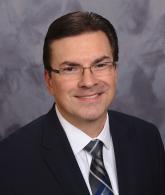New Life Safety Code requirements begin July 5
Editor's note: After publication, the Centers for Medicare & Medicaid Services has extended the deadline and will not begin surveying for compliance until Nov. 1.
New Life Safety Code (LSC) requirements will be officially implemented for licensed skilled nursing facilities (SNFs) in the United States on July 5, 2016. As most providers know by now, the Centers for Medicare & Medicaid Services (CMS) will enforce the 2012 edition of the Life Safety Code (NFPA #101) instead of the previously enforced 2000 edition of the code.
In addition to the Life Safety Code, other editions of select codes and standards published by the National Fire Protection Association (NFPA) also have been adopted by reference (in full or in part) and will be enforced. Here are some of the other key NFPA codes and standards that will be enforced along with the applicable editions of the documents:
- NFPA 99 (2012 ed.) – Healthcare Facilities Code (with some exclusions)
- NFPA 13 (2010 ed.) – Standard for the Installation of Sprinkler Systems
- NFPA 25 (2011 ed.) – Standard for the Inspection, Testing and Maintenance of Water-Based Fire Protection Systems
- NFPA 72 (2010 ed.) – National Fire Alarm and Signaling Code
- NFPA 14 (2010 ed.) – Standard for the Installation of Standpipe and Hose Systems
- NFPA 96 (2011 ed.) – Standard for Ventilation Control and Fire Protection of Commercial Cooking Operations
- NFPA 10 (2010 ed.) – Standard for Portable Fire Extinguishers
- NFPA 80 (2010 ed.)- Standard for Fire Doors and Other Protective Openings
All of the NFPA referenced codes and standards as well as other publications including ACI, ANSI, ACME, ASSE, ASTM, FMGR, NEMA, UL and U.S. Government publications are listed in Chapter 2 of the 2012 edition of the Life Safety Code.
Stick to the 2012 edition
Here’s what’s confusing: Newer editions of the NFPA codes and standards have been published since 2012, but it’s the 2012 version that CMS is implementing. If licensed SNF providers use and reference a more recent edition of one of these documents, they would not be using the correct edition of the code or standard for the purposes of CMS compliance. Each different edition of NFPA codes and standards has either minor or major changes that can impact interpretation, implementation and enforcement.
As a consultant conducting mock life safety surveys of nursing homes around the country, I often encounter the well-intentioned administrator or maintenance director who is excited to show me that they have the newest edition of a code or standard in their library to use for Life Safety Code compliance. Of course, I have to inform them that they are using the wrong edition of the document. While each edition may be fundamentally similar in general content, there always are changes from edition to edition that will have impact on implementation and enforcement practices.
Major code changes
One NFPA standard that has significantly changed its content and appearance is the Healthcare Facilities Code (NFPA 99, 2012 ed.). This document has been completely re-written and changed its general format from being a standard to becoming a code. The 2012 edition of the Healthcare Facilities Code requires healthcare facilities to conduct a risk assessment of their critical systems to determine what sections of the code will apply based on the levels of identified risk. Essentially, an assessment will be required to determine the impact that the loss of a particular utility or system will have on Life Safety conditions within the facility. Based on this assessment and the specific risk category that is identified on a scale of 1 through 4, appropriate sections of this code will apply and be enforced.
Another significant change to the LSC is the addition of a new chapter that addresses building rehabilitation (Ch. 43), including work associated with the following:
- Repairs
- Renovations
- Modifications
- Reconstructions
- Changes of use or occupancy classification
- Additions
This new chapter of the LSC must be used whenever these types of work occur in existing healthcare facilities as required by other sections of the code.
Now that the landscape of LSC utilization and enforcement has changed, it is essential for providers to become more familiar with new editions of the codes and standards along with several other changes. SNF providers should work closely with their design, construction, sustainability and maintenance teams to ensure that they are referencing the appropriate editions of all applicable codes, standards and publications. Failing to reference and utilize the proper editions of the NFPA codes and standards as well as other referenced publications in the LSC can have adverse consequences.
Related: CMS gives hospitals extension to meet new fire safety codes

Stan Szpytek is the president of consulting firm Fire and Life Safety, Inc., in Mesa, Arizona, and is the Life Safety/Disaster Planning Consultant for the Arizona Health Care Association and California Association of Health Facilities. Szpytek is a former deputy fire chief and fire marshal with more than 35 years of experience in life safety compliance and emergency preparedness. For more information, visit www.emallianceusa.com or email Szpytek at Firemarshal10@aol.com.
Related Articles
Topics: Executive Leadership , Operations , Regulatory Compliance











